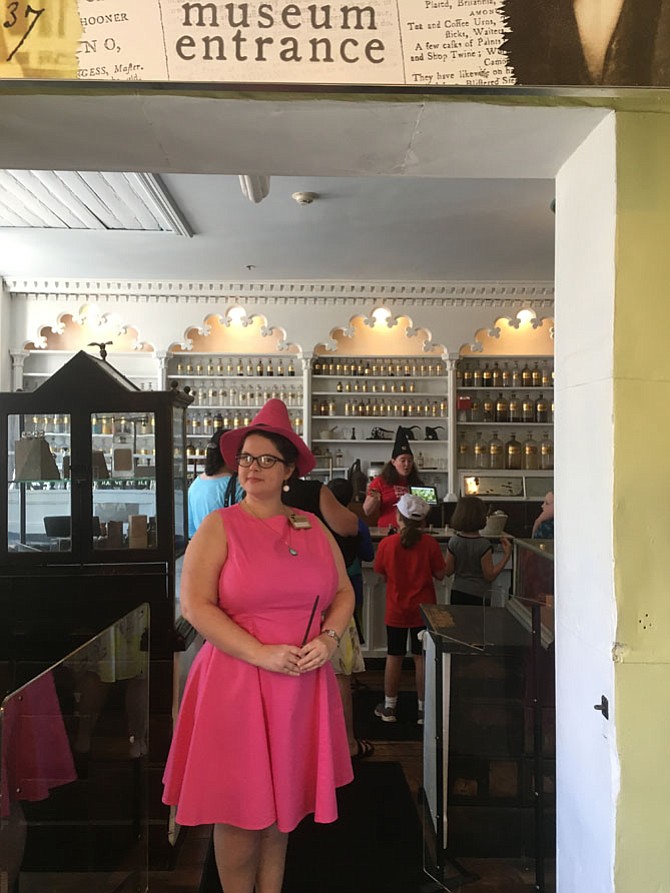Lauren Gleason, site manager of the Stabler-Leadbeater Apothecary Museum, was dressed as character Dolores Umbridge at the museum’s celebration of Harry Potter’s birthday. Photo by Antonella Nicholas/Gazette Packet
For the sixth year in a row, the Stabler-Leadbeater Apothecary Museum presented “The Real Science behind Harry Potter,” a succession of special tours given to youngsters on Sunday, July 30 explaining the actual science involved in potions from the Harry Potter universe. The occasion was Harry Potter’s birthday — actually, his birthday is July 31.
The Apothecary, originally founded in 1792, is home to medical equipment and ingredients that are restored to their 18th-century appearances, many of which are mentioned in the Harry Potter series. The tour compared the way “muggles,” non-wizard humans, used the ingredients with the way wizards used them. The tour also noted ingredients in the wizarding world that have equivalent properties to real world ingredients.
“It’s really obvious that there are Harry Potter associations,” said Site Director Lauren Gleason about the similarities between the Apothecary’s herbal remedies and the potions made in the books.
Dragon’s Blood, Mandrake Root, and Unicorn Root all are ingredients that exist in both the real world and the Harry Potter universe. For example, according to Gleason, Dragon’s Blood is the bright red sap taken from the Dragon Tree found in North Africa, and is used in paints and pigments. Furthermore, in the Harry Potter series, a bezoar stone was given to someone who had been poisoned. Bezoar stones exist in real life; however, in the Apothecary, pharmacists administered charcoal to absorb poison.
To kick off the tour, tour guides quizzed the children with Harry Potter trivia questions. Then the guides discussed the history of the Stabler-Leadbeater Apothecary Museum. Next, the tour entered the historic laboratory where youngsters were faced with rows and rows of ingredients in glass bottles. Here, they learned about the parallels between the elements on the shelves and the ones used in wizard potions. Finally, the children were led up to a photo corner where they and their parents took pictures with Harry Potter costumes and props.
Apothecary museum volunteers, and volunteers from the Junior Women’s League, gave tours and asked trivia questions.
To add to the celebration, Hooray for Books sold Harry Potter books and merchandise at the museum, and Dolci Gelati, whose store is close by, sold special gelato flavors including “butterbeer” and “knickerbocker glory.”
The youngsters, many of whom have read, or are in the process of reading, the Harry Potter books, enjoyed the tour. “It was pretty cool to learn about how potions are made” said Richard Woodward, one of the children who attended the event. Richard said he liked learning about the properties of lavender, a plant used in sleeping potions.
Parents took pleasure in the event also. “I really like the antique bottles, they maintain that old-time atmosphere,” said Charlene Woodward, Richard’s mother.
Matt Slaight and his son Grant also enjoyed the historic ambience. “It’s a neat experience — this is historic and we’re getting the kids involved,” Sleight said. Grant pointed out that he also liked the lavender for its pleasant fragrance and its sleep-inducing effect.

